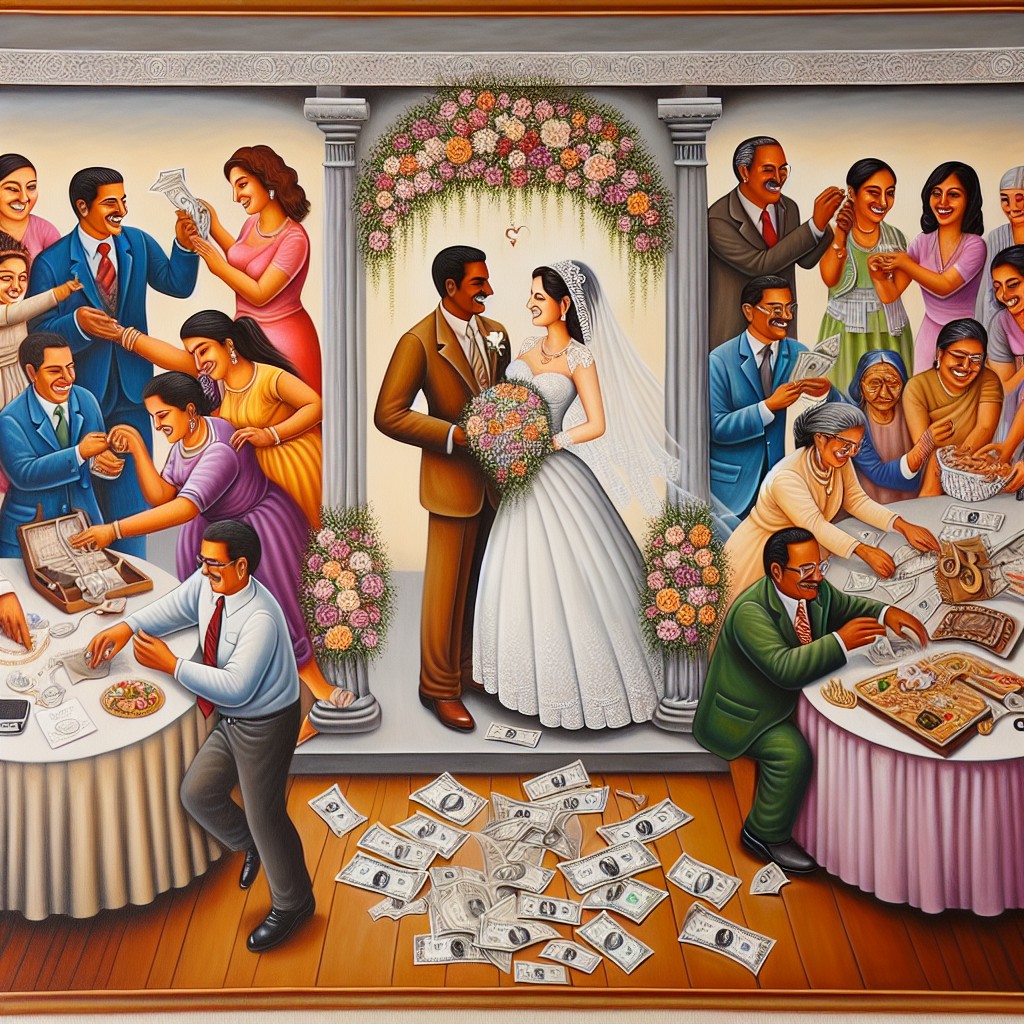Discover the traditional breakdown of financial responsibilities in wedding planning and learn who typically pays for each aspect of the celebration.
Key takeaways:
- Bride’s family historically covers wedding dress, venue, and reception.
- Groom’s family typically pays for rehearsal dinner, groom’s attire, and more.
- Couples often contribute financially, prioritizing what matters to them.
- Create a budget, prioritize expenses, and track spending.
- Same-sex couples can divide expenses equally and discuss family contributions.
Expenses Traditionally Covered By the Bride’s and Groom’s Families

In a traditional wedding, the bride’s family has historically taken on the bulk of the expenses, covering significant costs such as the wedding dress, venue, décor, and the entire reception. This often includes the catering, music, flowers, photography, and any rentals needed for the ceremony and reception.
On the other side, the groom’s family typically covers the rehearsal dinner, the groom’s attire, transportation, and lodging for the groomsmen, as well as the marriage license and officiant fees. They may also pay for the bride’s bouquet, boutonnieres for the groom’s party, and the honeymoon.
Keep in mind these are traditional roles that are often adapted to fit the unique circumstances of each wedding. Today, responsibilities often shift and are shared differently to align with the couple’s financial situation and personal preferences.
Most Couples Contribute Financially to Their Wedding
It’s increasingly common for couples to fund part or even all their wedding, reflecting financial independence and a desire for a personalized celebration. Here are some pointers to navigate this situation:
- Joint Savings: Many couples opt to save together for their special day to cover costs without external assistance.
- Personal Priorities: This arrangement allows couples to prioritize what’s essential for their wedding, ensuring they pay for what matters most to them.
- Transparency and Communication: When both partners contribute, open discussions about expectations and financial limits are crucial to avoid overspending.
- Financial Fairness: Contributions are often based on each person’s financial situation, creating a balanced approach to wedding expenses.
- Modern Etiquette: Though historical traditions offer a blueprint, contemporary practices embrace the couple’s choice in financial matters.
Maintaining control over wedding finances can lead to a profound sense of accomplishment and unity as the groundwork for marital partnership is laid.
Starting With Your Budget
Before diving into the allocation of expenses, it’s crucial to have a clear understanding of your overall budget. This helps set realistic expectations and boundaries for what you can afford. Here are several pointers to guide you through this process:
1. Determine Your Total Available Funds: Add up any savings, contributions from family, and expected cash flows that are designated for your wedding.
2. Prioritize Expenses: List what aspects of the wedding are most important to you and allocate more of the budget there.
3. Be Flexible: Understand that unexpected expenses may arise, so include a contingency fund in your budget.
4. Communicate Openly: If family members are contributing, discuss specific amounts or percentages and clarify these contributions early on.
5. Track Your Spending: As you plan, keep a meticulous record of all expenses to ensure you stay within your budget.
Rules for Same-Sex Couples and Wedding Expenses
In the case of same-sex couples, the traditional rules for who pays for what at a wedding may not apply. As society evolves, so too does the approach to wedding expenses. Here are some considerations:
- Equality in Contributions: Many same-sex couples opt for a fair divide of expenses to symbolize the equality in their relationship.
- Family Contributions: Communication with both families is key. Discuss the possibility of family contributions and whether this is something that everyone is comfortable with and can afford.
- Personal Preferences: Decide on what aspects of the wedding are most important to you both and allocate your budget accordingly.
- Splitting Costs: Some couples choose to split the cost of the wedding evenly, ensuring both parties contribute equally.
Remember, the most important element is the commitment you are making to each other, not who pays for what. Open dialogue and agreement between partners will ensure a fair and joyous beginning to marital bliss.
Discussing Who Pays for the Wedding
Navigating the subject of wedding expenses can be delicate, but open communication is vital. To ensure all parties are on the same page:
- 1. Initiate the conversation early to provide ample planning time and budget adjustments.
- 2. Involve all key stakeholders, including both families and the couple, in a candid discussion.
- 3. Present a preliminary budget to give a realistic picture of potential costs.
- 4. Clarify expectations and limitations each party may have regarding their financial contribution.
- 5. Consider the emotions and financial situations of everyone involved, proceeding with sensitivity.
- 6. Keep a record of decisions made for future reference and budget tracking.
- 7. Be willing to compromise and explore creative solutions if there are financial constraints.
Remember, this is a collaborative effort to celebrate your marriage, not just a financial transaction.



